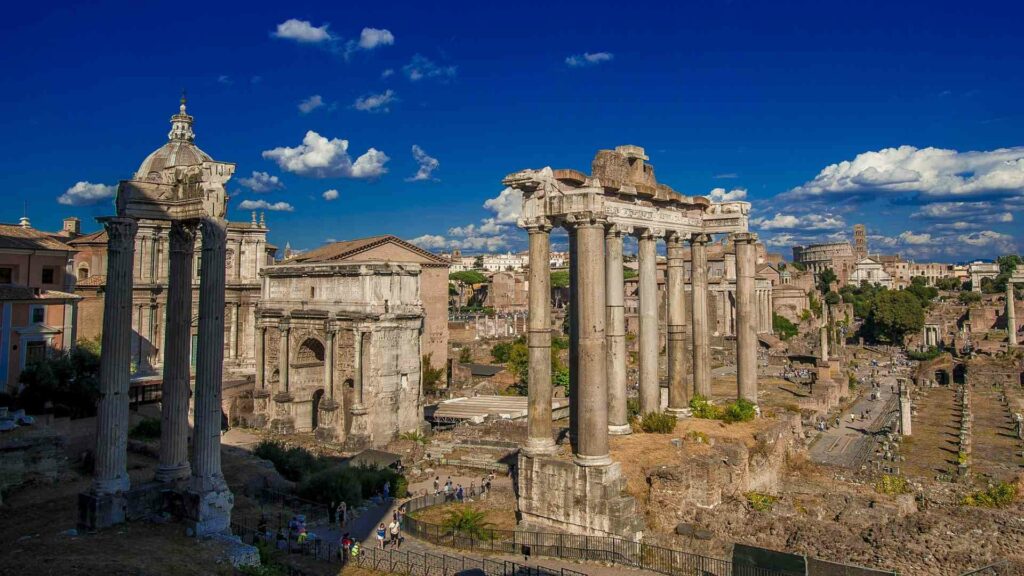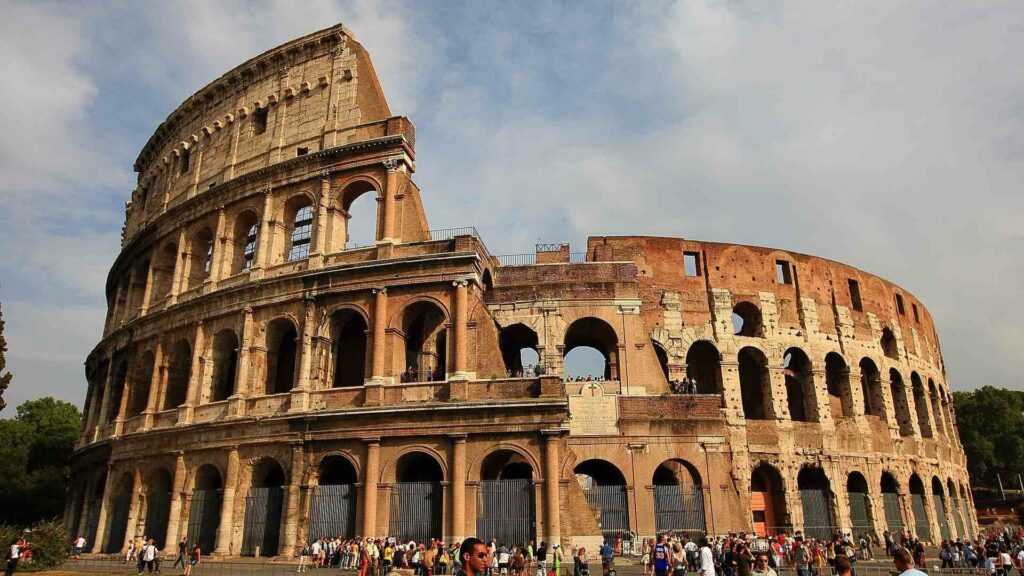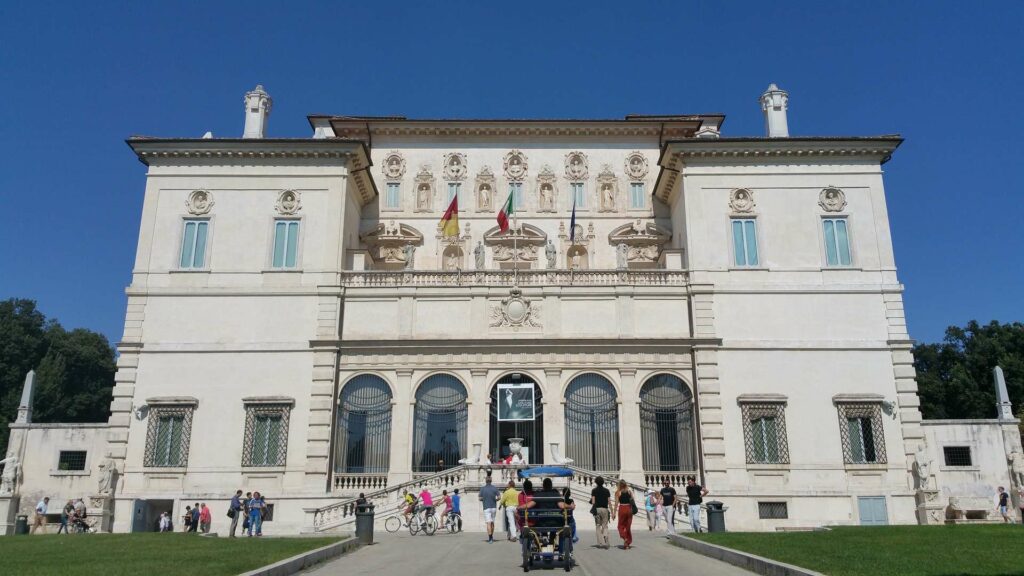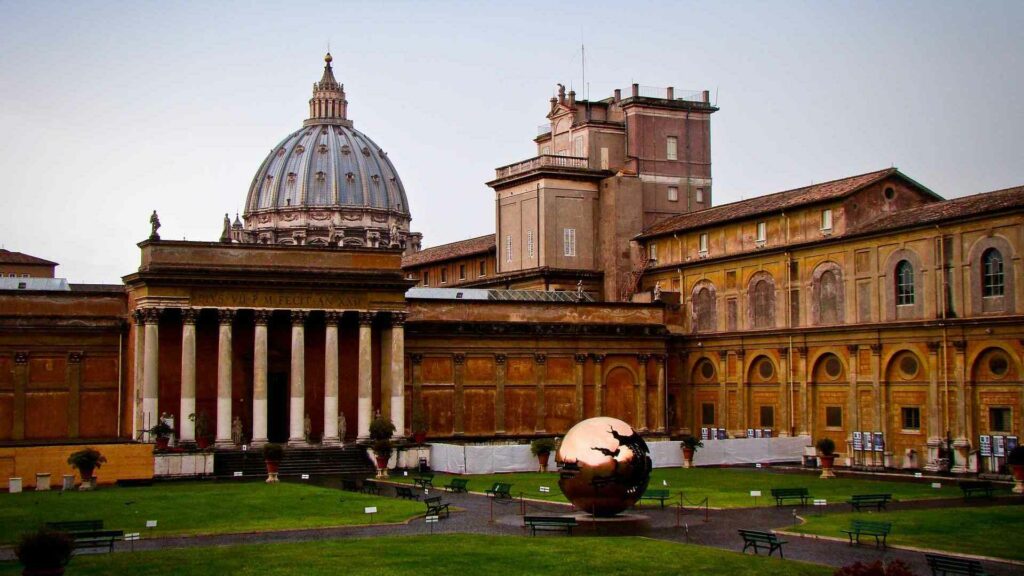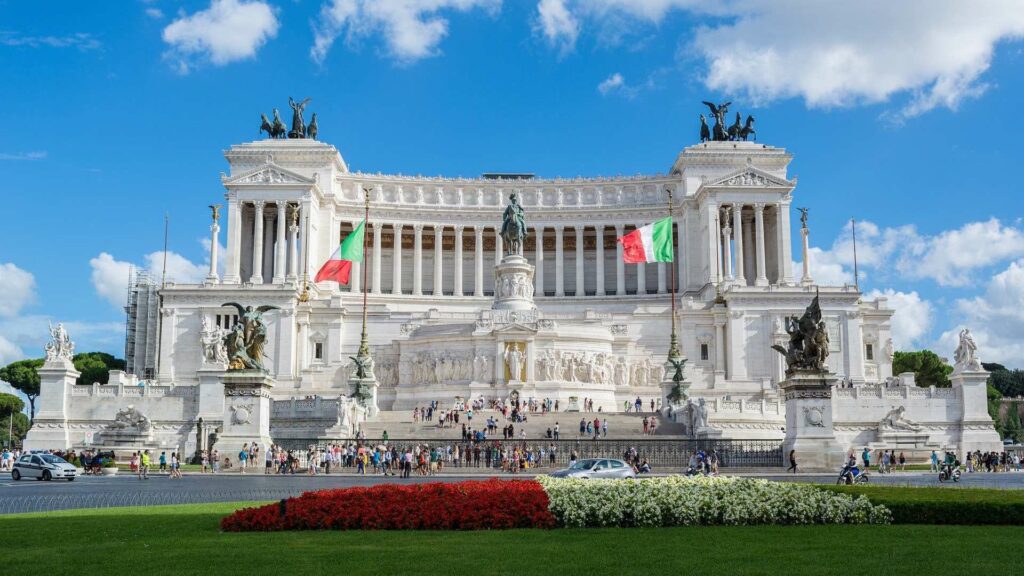Contrary to its appearance, this majestic building has been part of Rome’s history since 123 AD, when it was built as a mausoleum of emperor Adrian and his family, having been renovated and enlarged through the years. It kept its burial site purpose for the subsequent emperors too, until Caracalla’s time (217 AD).
Its purpose changed in 403 AD, when it was transformed into a fortress included in the Aurelian walls, made to protect the city from foreign invasions.
Castel Sant’Angelo as a stronghold of Christianity
The start of the pontifical dominion of the castle, strategically close to St. Peter’s basilica, dates back to the time of the pontificate of Gregory I the Great (590-604) and attributed to the legendary apparition of the archangel Gabriel while sheathing his sword back (as depicted in the statue brooding over the castle), symbol of the end of God’s wrath, that ended the plague.
During the Middle Ages, the many master families who followed one another at the dominion of Rome, have fought to gain control over the castle. Around the year 1000, it was taken over by the Crescenzi family and in 1082 was used as a shelter, for two years, by pope Gregory VII, forced to flee the Vatican, invaded by the troops of emperor Henry IV.
Since the end of the 12th century and for the entirety of the subsequent century, the control over the Castle went to the powerful Orsini family and Pope Nicholas III, who chose it as its residence. He commissioned the renovation and the variations, including a square block built on the top of the castle, the ancient Roman structures. The construction of the famous Passetto di Borgo dates back to this period too, built on the walls of Leo IV to connect it to the Vatican.
During the pope’s exile in Avignon (1305-1379), the Castle was pillaged and most of the marble structures were severely damaged. In 1367, pope Urban V ended the exile of the curia, but only after obtaining the keys to the Castle. From this moment on, there were many renovations and structural modification to make it a proper fortress, safe in defense and comfortable as a residence.
The subsequent popes kept on commissioning changes and betterments to artists such as Bramante (who built the front loggia in the upper part at the beginning of the 1500s, commissioned by Julius II) and Bernini (who was commissioned by Clement IX to work on the side angel statues of the bridge during the second half of the 1600s), just to name a few.
The Museum
Being the Castle a fortified building, considered unassailable, it hosts many different collections dating back to many different eras. We’re talking about paintings, sculptures, ancient and modern weapons, military and historical relics. The collections trace back to the military management of the museum and remained there until the 1970s, to then make room for other relics, amongst which the ceramic collections (from the 15th to the 18th century) and medieval and modern sculptures.


